With tech companies and their platforms rising and falling out of favor, unequal application of usage rules, data mining, and general privacy violations there has been a growth in alternative communication options. These seek to provide a way for users and communities to remain more in control of their data, privacy, and security by being open source, thus auditable, as well as some being able to host the platform directly on personally owned servers rather than on a company’s server.
After testing a number of these solutions I would personally recommend the use of the service called Matrix for the time being, which is an open-source and highly customizable protocol which offers ease of use through client applications that function much like most modern messengers and community applications. It has the unique advantages of being decentralized, ie if the main servers go down it will still be accessible by other federated servers, it truly supports end to end encryption in group and private messages, and can also use what are called “bridges” to allow for the connection and sharing of messages between other platforms.
To get started first choose a client application that you’d like to use with the network. A full list of clients can be found here: https://matrix.org/clients/
The most simple and similar to other messengers I’d recommend to start with is Element, which happens to be maintained by the group maintaining Matrix as well.
Once you have downloaded a client application and installed it you will need to make an account. Since Matrix is decentralized you can choose a variety of servers to register your account with. To keep things simple you could register an account with the matrix.org or from one of the many open public servers here: https://joinmatrix.org/servers/ The bottom of that page has a good explanation on why and how to choose one.
For our example of how to get up and running I will create a user on the homeserver nope.chat due to it not storing any logs and Germany having just about the strongest privacy laws in the world currently. It’s important to note that just because I am making a user account on a particular homeserver it does not mean I cannot communicate with members of other homeservers, that is the advantage to Matrix over other services, it is much like email, whereas if you know someone’s address you can directly message or invite them to groups. After launching Element you should be shown a similar screen, first click the Edit button to change the homeserver. This would need to be done for registration or logging in if you do not register with matrix.org
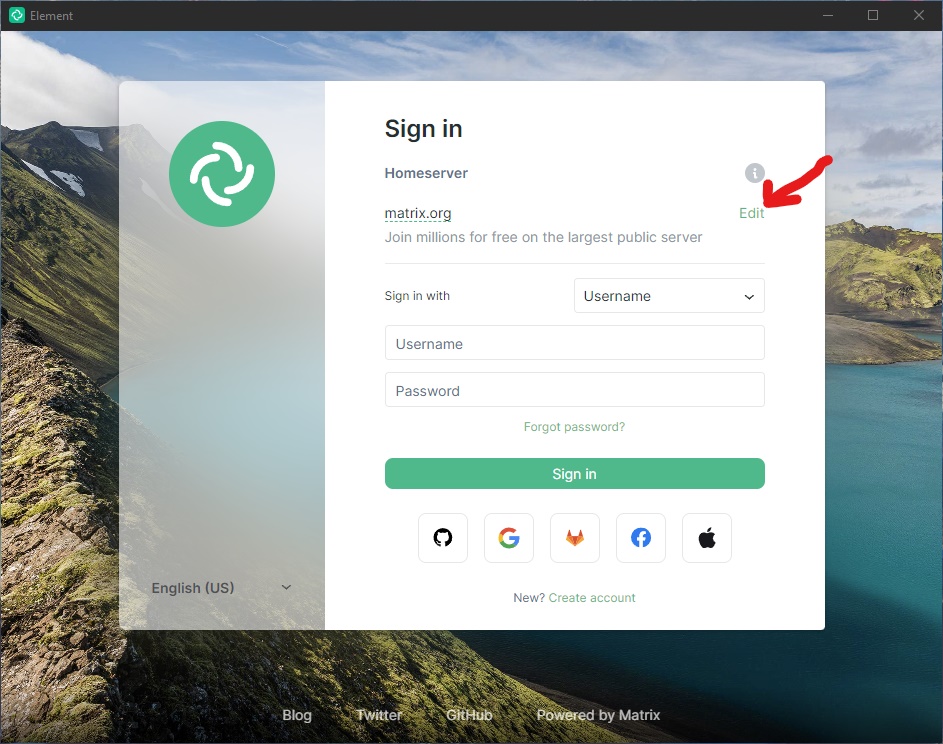
Then enter the domain you’d like to use for a homeserver, nope.chat for our example, then click continue.

Once back on the sign in page click the create new account button.
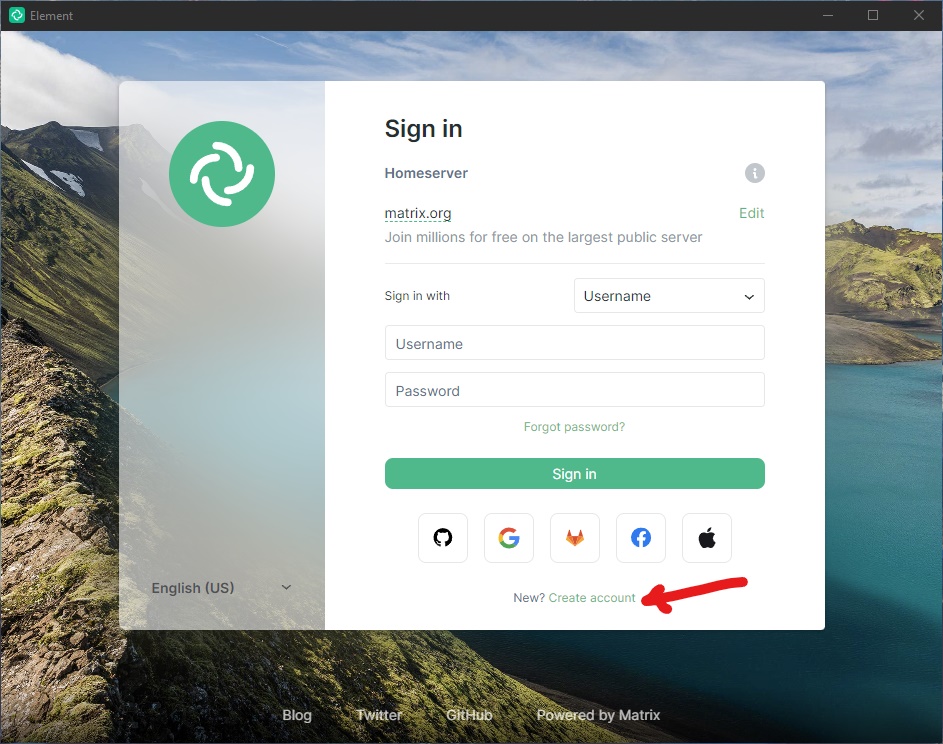
Choose a user name, and as a note they are unchangeable later currently, and a good password for your account. You can choose to add an email address or phone number if you’d like to allow for people to find you more easily and also for password recovery, though they’re not mandatory. After you are all set click register and wait a few moments for your keys to be generated.
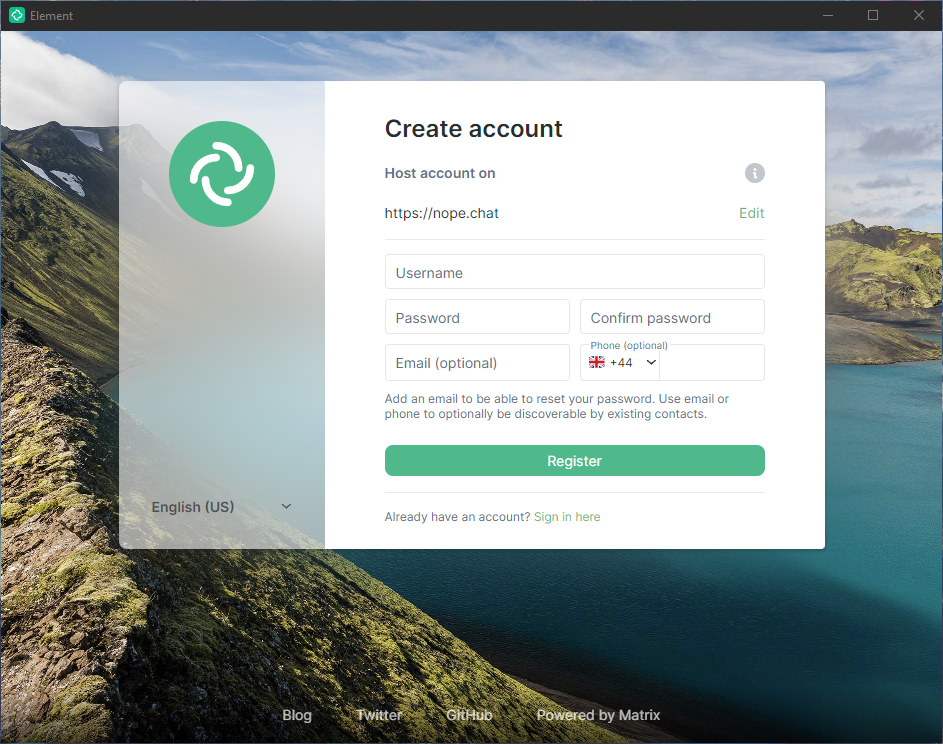
The next screen will help pre-configure Element’s display preferences, but it is not necessary to choose one method and all the options can be changed to your liking later.
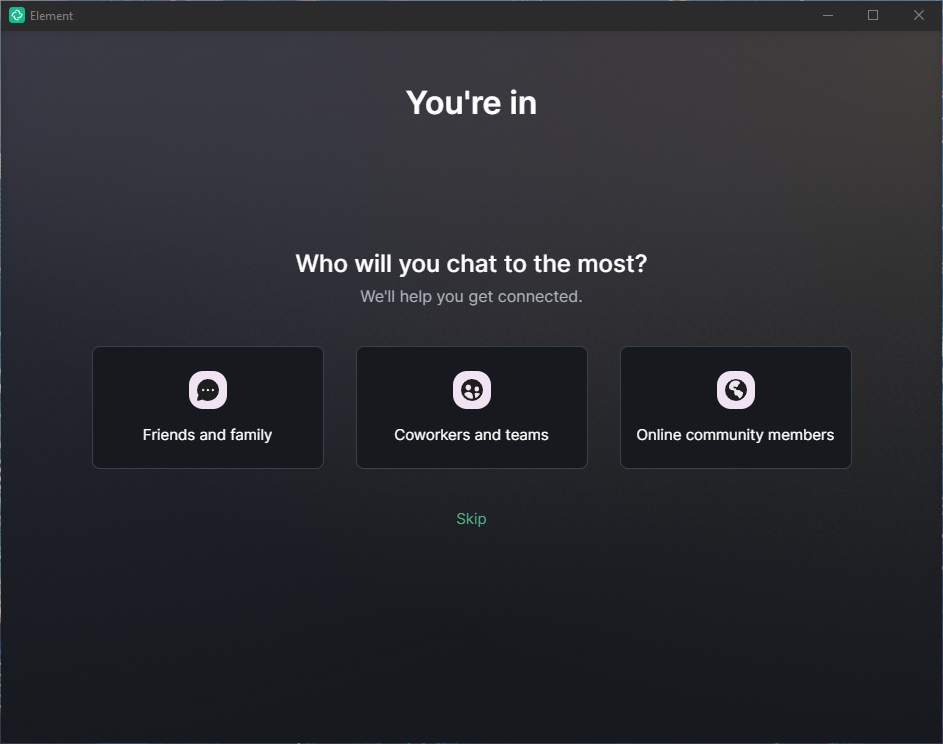
We’re almost done now, and you can choose to provide the Element team data to identify software issues if you’d like or not. I’m not sure how non-personal that data really is though since they likely will gather system information and an IP address.
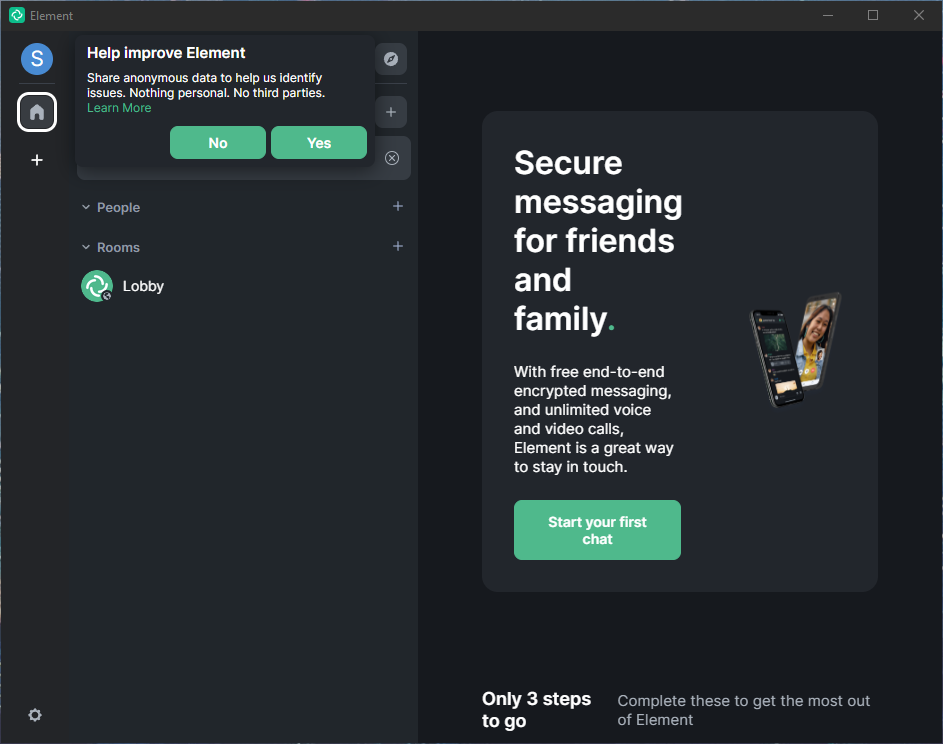
Now we’re in and ready to start connecting to others and talking. Element is essentially organized in three layers, starting from the most simple you have People, which is where direct messages live, then you have Rooms, which are similar to Groups or Channels depending on what service you’re coming from. An important note here is that rooms with a globe in the lower right corner mean they are public and any Matrix user can join and likely are also unencrypted. Then on the left most side of Element you have Spaces, which can be your own personal collections of Rooms and People, or ones made by communities to allow for a quicker and easier to navigate Room collection so users don’t need to manually join each room.
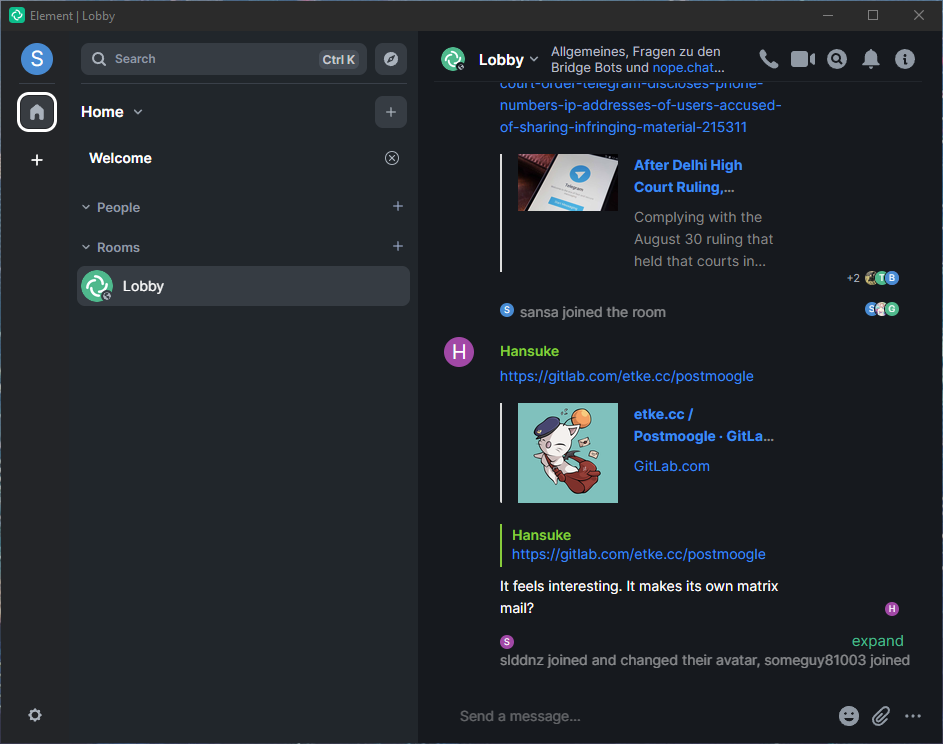
To direct message someone, simple click the plus button to the right of People and enter the address of the person you’d like to message. Matrix addresses for people are in the format of @name:homeserver or you can copy the invite link and send it to someone.
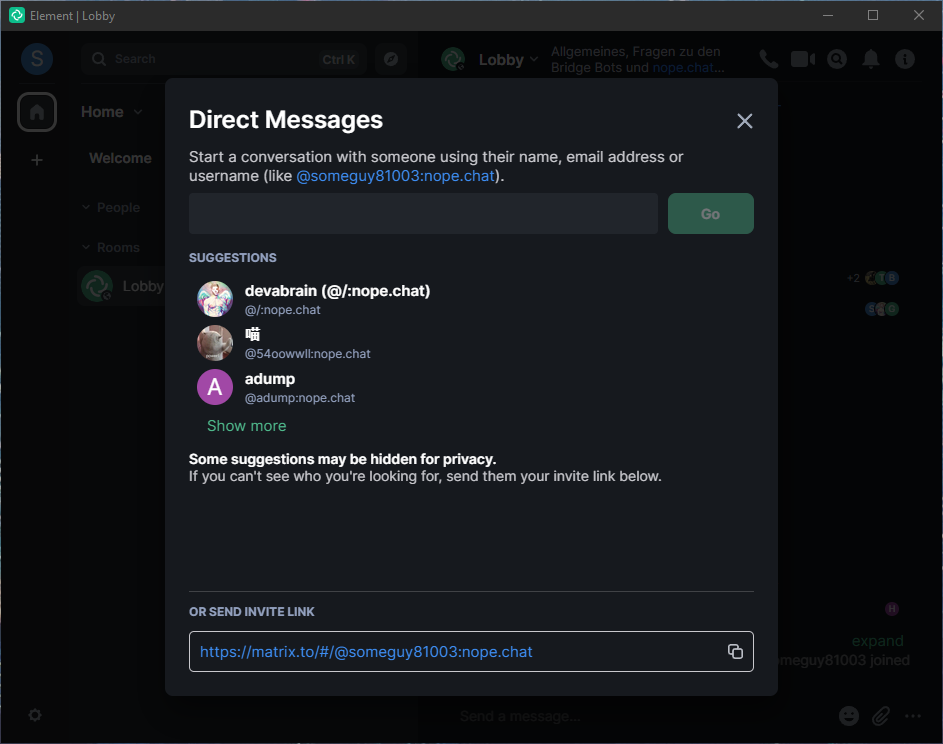
To find a Room, click the plus button to the Right of rooms then click Explore Rooms. In the search box you can search for public rooms based on terms or an address in the format of #roomname:homeserver. Below the search and depending on the homeserver you’re registered with you may see public rooms on that homeserver.
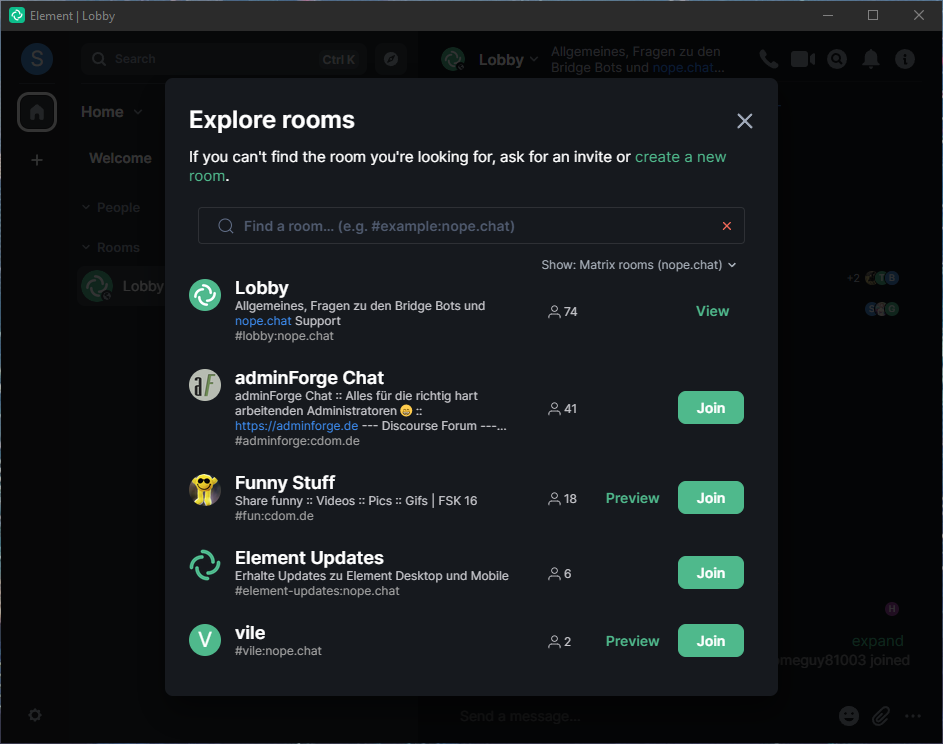
That should cover the basics, but if I have missed anything or you have questions feel free to reach out to me at on Matrix @seven10:matrix.org or here.
